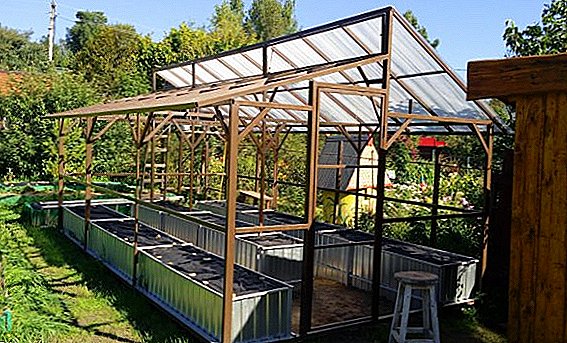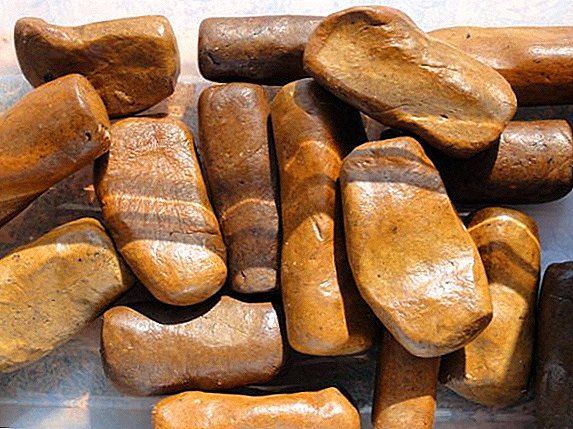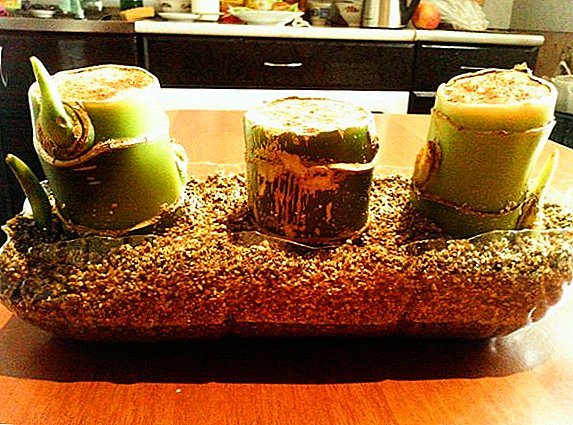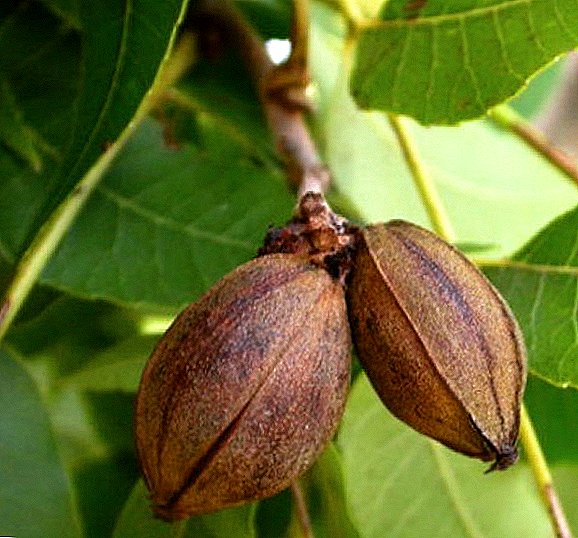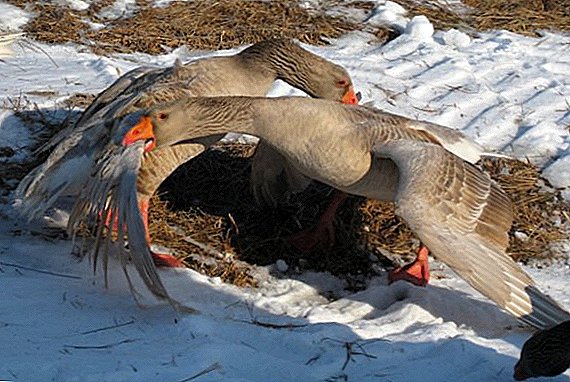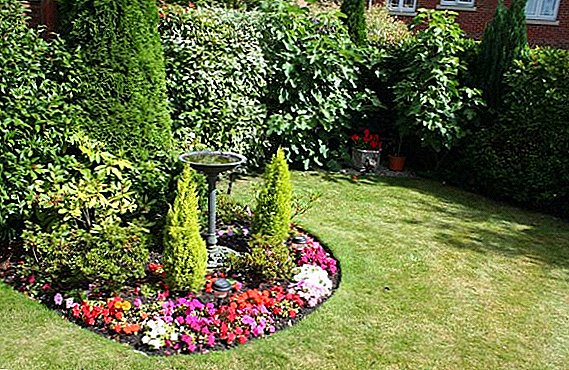 Each owner of the suburban area eventually gets tired of the usual type of beds of conifers and shrubs, from the usual annual and perennial flowers. Constantly want diversity. In this case, you can make beautiful mixborders that fit perfectly in any landscape.
Each owner of the suburban area eventually gets tired of the usual type of beds of conifers and shrubs, from the usual annual and perennial flowers. Constantly want diversity. In this case, you can make beautiful mixborders that fit perfectly in any landscape.
Of course, creating a mixborder with your own hands, drawing up diagrams and tormenting with the selection of plants can be tedious, but the result will definitely please you. In this article, we will talk about how to create a mixborder with your own hands, as well as determine which plants are better for choosing for a mixborder.
What is a mixborder
Often in the forums on garden design there are questions about what is a mixborder and how it differs from the usual flower beds. The first and most important difference between a mixborder and a flowerbed is that in it the plants should not be located close to each other. In a mixborder, flowers can grow in independent groups, separated by gravel, mulch or stones. The second difference is that the mixborder can be "limited" only from the front. From this we can conclude that the mixborder is fully capable of replacing the flower bed and making it look better. 
So, a mixborder is a special kind of design for flower beds along a walkway, pavement or fence, for example. The literal translation from English is "mixed border". Mixborder can be arranged in a triangular, square or rounded oblong shape.
It is often confused with a discount, but there is a fundamental difference between these two design methods: there are strict lines in the discount and a clear pattern is observed. Mixborders are most often used in landscape design for decorating garden alleys, for decorating slopes and elevations, for separating zones in the garden.
Did you know? In the classification of mixborders, not only floral, but also vegetable mixborders are distinguished. This is explained by the fact that many vegetable crops have an interesting "appearance", color. In addition, such a mixborder will bring not only aesthetic pleasure, but also benefit - in the fall you can harvest.There are many types of mixborders grouped from perennials, annuals, and finding their planting schemes is not difficult, and the most common types of mixborders have the following names:
- English mixborders (different forms of rigor and restraint);
- meadow (when creating used meadow flowers and cereals);
- rustic (here you can use all the riot and beauty of plants in your area).

Mixborder in the country: how to choose a place for a flower bed
Before you make a mixborder with your own hands, you must clearly consider where to place it. The shape of the mixborder, its size and the plants with which you decorate it will depend on the right choice of place.
When choosing a place, it is necessary to take into account the relief of your site, so that later there will be no difficulty in handling the mixborder, because on the slopes it will be easier to take care of the flowers, although it is best to build an alpine slide on the slope.
If we consider the choice of place solely from a design point of view, then placing the mixborder along a wall or fence should take into account the length of the landing: if the area is large, it is better to make the mixborder intermittent. If you decide to decorate the alley or garden path with a mixborder, then you need to retreat 50-70 cm from the edge of the curb when planting.
How to choose plants for mixborder
In order to mixborder harmoniously fit into the overall design of your garden, you need to choose the right plants that will look good in group plantings. Before you start planting plants in a mixborder, you must also take into account the fact that the root system of some plants grows stronger, and therefore it is better to abandon such plants. On how to choose the right flowers for mixborder, we will talk further. 
Compatibility requirements for growing flowers (lighting, temperature, soil)
Each plant differently transfers different types of soil. For example, some flowers prefer acidic soils, some - heavy and almost swampy, others - friable, moderately moist. Another important factor in the selection of plants is temperature: some heat-loving plants are simply not able to coexist with plants suitable for growing in a cool climate. As for lighting, you need to pick up light-loving plants for one planting, and those that may suffer from direct sunlight, for another group.
Important! Mixborders, consisting of some conifers and shrubs, require shading, so when drawing up a mixborder scheme, it is better to plant them in the shade of tall trees or a fence.In addition to the fact that plants should be combined in terms of temperature, soil and lighting requirements, care should also be taken to protect them from drafts. Almost all plants will need this.
Selection of colors for mixborder plant growth
In order for plants to feel comfortable in your mixborder, you need to make sure that the flowers match in size. For example, tall plants are best planted in the back of the mixborder, but low-growing flowers in the front. 
If you plant, for example, roses, and behind them pansies - the latter will not be visible, and they will lose their beauty. For the convenience of working on a mixborder between each group of plants (short, medium tall, tall) it is necessary to leave gaps that can be masked with gravel, pebbles or decorative stones.
Did you know? When planning a mixborder, you need to take care not only of the main plants, but also of the background. Conifers will be the best background for mixborders, because with green color in the background any plant will look bright, and the schemes of such plantings are very popular among landscape designers.If the mixborder is placed in the middle of the lawn, it is necessary to plant the plants so that the center has the tallest flowers, and low-growing plants should serve as a border.
How to pick flowers for flowering time
In order for the mixborder to retain its decorative appearance, it is also necessary to take into account the fact that plants should be combined in terms of flowering, especially planting from perennials, because growing plants in a mixborder step by step, separately from the others will not work. With the help of a miksborder you will achieve the maximum scenery of your plot from spring to the very autumn, because while some plants will bloom, others will start a growing season, and vice versa. 
If your mixborder consists of plants that bloom at different times, you need to plant new flowers in time to replace those that have already faded.
Important! It is better not to use evergreen wobbling shrubs for a mixborder, the rest of the plants may not make their way under their cover.
The choice of colors
When choosing colors it is best to rely solely on your own taste. However, all the flowers that will "inhabit" your mixborder, should be bright, but you need to combine them so that the effect of alyapistosti is not created.
It is better to use flowers of not too contrasting shades, and if you have already decided to use red and green, for example, then it is better to place them in different corners of the mixborder. The best solution would be to use 2-3 primary colors, and in addition to them - shades a tone darker / lighter. The most versatile is white, due to the fact that it is combined with all other colors.
The best and most popular combination of colors are: blue, red, yellow, orange, violet and crimson will work well for them. If you place the colors on a green background, the composition will look expensive and magnificent. 
How to make a mixborder with your own hands (schemes)
Before you get started, you need to carefully consider the mixborder landing scheme. The most popular are perennial mixborders, so let's take a closer look at the schemes by which you can create them.
Mixborders look very nice in which coniferous plants and shrubs are combined, for example: in the far left corner we plant a dwarf spruce (you can use a cushion); we plant a rhododendron behind it, which blooms twice per season (May-June, end of August); to the right of rhododendron, phlox can be planted, which look good from spring to autumn; next to the phloxes, you can plant a Byzantine Chistere - the plant blooms all summer and is unpretentious to care for; in the extreme left corner - rhododendron again; in the front part - phlox and delphinium; The center of such a mixborder can be filled with asters, tulips, astilbe, and peonies.
Did you know? In order to mixborder pleased you even before perennials grow, you can fill the gaps in the planting with annuals.An example of a mixborder scheme with annual plants: a delphinium can be planted in the background (yes, it is a perennial, but in combination with annuals it looks great), dahlias (a “noble” flower with luxurious terry petals), then closer to the center are marigolds and tobacco Sander , begonia, petunia, verbena can be planted in the foreground.
This does not mean that you can use these combinations exclusively for mixborders; you can create mixborders by combining the plants or vegetables you wish, the main thing is that your creation should suit you. 
Important! Mixborder is better to "outline" with stones or gravel, then it will look like a planting, and not as a chaotic cluster of different plants.
Features of planting and caring for plants in mixborder: tips and tricks
Of course, the process of creating a mixborder is difficult, but to create a small landing, you need to be able to keep it in proper form. For this, flowers need care before planting, which consists in preparing the soil. Before planting, the soil must be fertilized and, if necessary, add the missing elements (peat, sod / leaf soil / drainage, etc.). Further, an important factor is the choice of a healthy planting material, whether it be seedlings or seeds, their quality should be high.
As for the care, the mixborder first of all needs watering (it is necessary to observe the rate of watering for each plant) and weeding. Weeding - An important procedure in the care of group plantings, because weeds pull nutrients out of the ground.
The next item is trimming: if not all stunted plants need this procedure, then it is necessary for shrubs and tall flowers. 
Well, another important procedure - top dressing. Based on what plants you grow, you need to pick them to fertilizer. The most popular are complex liquid fertilizers, which are suitable for almost all types of plants.
As for diseases and pests, it is necessary to carry out preventionsprinkling the mixborder with soapy water, weeding the beds in time and loosening the ground, as well as removing the foliage from under the plants, as it is the source of many diseases, and insects hibernate in it.
Of course, to create a mixborder is not easy, but by spending the effort once, you can get a beautiful site for many years. The main desire.


